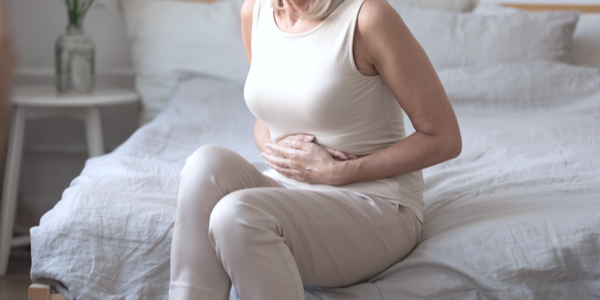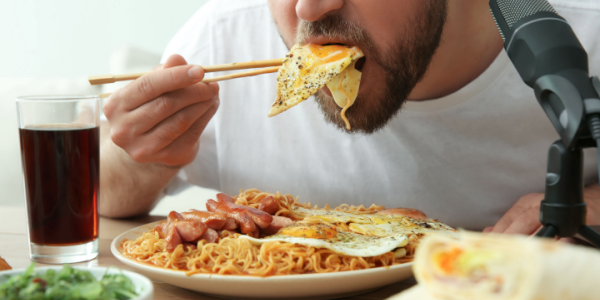
The difference between diverticulitis and diverticulosis may seem subtle. However, a diverticulitis diet plan, including adequate amounts of fiber, is needed to prevent this serious infection. A liquid diet and diverticulitis go hand in hand when it comes to treatment.
But there's so much more to understand regarding a diverticulitis diet... Read on for a list of foods to enjoy and avoid with diverticulitis.
What's the Difference Between Diverticulitis and Diverticulosis?
For starters, take a look at the similarities. Both diverticulitis and diverticulosis take place in the digestive system. Many of the symptoms mirror gastrointestinal (GI) functional or motility disorders. However, the specific differences warrant specialized treatment plans.
Diverticulosis is a condition where small pouches develop on the wall of the colon - also known as the large intestine. The pouches themselves are harmless and usually do not cause serious symptoms. However, the pouches can become inflamed and infected and cause serious problems.
It’s actually a very common disorder, usually affecting 1 in 10 people who are over the age of 40. Risk increases with age, with half of those over age 60 developing diverticulosis and 2 out of 3 people over 80 dealing with diverticulosis as well.
If the small pouches on the colon become infected, the situation becomes more serious. The infection is called diverticulitis, and can quickly wreak havoc on the human body. About 1 in 5 to 1 in 7 cases of diverticulosis lead to diverticulitis.
Common Symptoms of Diverticulitis
Symptoms of diverticulosis are subtle. When someone has diverticulitis, the symptoms are more noticeable. They include:
• Abdominal pain (typically left side)
• Chills
• Constipation or diarrhea
• Fever
• Nausea
• Vomiting
It is important to be aware of diverticulitis and the symptoms associated with this situation. The symptoms often mimic other conditions, like appendicitis, Crohn’s disease, irritable bowel syndrome (IBS), ovarian cyst, or peptic ulcers. Doctors often need to conduct multiple tests (i.e. an endoscopy, ultrasounds, an x-ray).
Can Diverticulitis Be Reversed with Diet?
To prevent and reduce the risk of diverticulitis, it is best to properly manage a diverticulosis diagnosis. Research suggests that diets low in fiber are to blame for the incidence of diverticulosis. Since diverticulosis can develop into diverticulitis, include adequate amounts of fiber in the diet.
Fiber has the job of bulking up the stool. This keeps it soft so it easily passes through the colon without straining the muscles that help to move the stool throughout the colon. When the walls have too much pressure on them, pouches begin to form.
Using Diet to Prevent Diverticulitis
In order to best prevent diverticulosis and diverticulitis, it is recommended to consume 20 to 35 grams of fiber per day. For women, the recommended amount is 25 grams, and for men, 38 grams per day. In other words, aim for about 14 grams of fiber per 1,000 grams of calories.
So, where is fiber found? Fiber is found in plant-based foods, including:
• Fruits and vegetables: almost anything with the peel or seeds (i.e. apple with peel, pear with skin, raspberries), avocados, beets, broccoli, and carrots, white or sweet potatoes, stewed prunes
• Grains: rolled or whole oats, whole grain bread or crackers, air-popped popcorn, pearled barley, 100% whole wheat, whole rye, brown or wild rice, ancient grains
• Legumes: beans and cooked beans, lentils, nuts, peas, and seeds
Generally, the more processed a food is, the less fiber it contains. Fiber (and water) should be increased gradually since it can require a lot of water from the body.
Other Dietary Needs for Diverticulitis
Getting adequate energy and fluid amounts is also important. Aim for at least 8 glasses of water or hydrating fluids a day. Sugar-sweetened beverages introduce their own set of challenges, so it’s best to steer clear of sodas and other sugary drinks.
Great foods for a liquid diet include:
• Broth
• Jell-O
• Water
Which Foods Worsen & Improve Diverticulitis?
Ironically, if one is recovering from diverticulitis, a high-fiber diet can put a strain on the digestive tract. The typical treatment for diverticulitis is antibiotics and a liquid and low-fiber diet to ensure healing of the intestinal walls.
High-Fiber Foods to Avoid with Diverticulitis
High-fiber foods should be swapped for more gentle-to-digest, cooked, or refined foods. Avoid the following options on a low-fiber diet:
• Grains (i.e. whole grains, brown rice, oatmeal, granola)
• Kasha (buckwheat)
• Cornbread or cornmeal
• Bran
• Wheat germ
• Beans (i.e. baked beans, lentils)
• Legumes and peas
• Nuts (i.e chunky peanut butter)
• Seeds
• Breads with added seeds
• Raw or dried fruits and vegetables (i.e. fresh apple, coconut)
Other foods or food components to be mindful of and avoid include:
• Berries with seeds
• Prunes, prune juice, and raisins
• Marmalade
• Tomatoes (also contain seeds)
• Cabbage, broccoli, cauliflower, Brussels sprouts, greens
• Pickles, olives, relish, and horseradish
• Sauerkraut
• Onions
• Lactose (i.e. milk and dairy)
• Milk alternatives (may contain small amounts of fiber)
• Processed meats (i.e. hot dogs, sausage, cold cuts)
• Popcorn
• Potato chips
Low-Fiber Diet Food to Eat for Diverticulitis
Instead of high-fiber foods, consider these low-fiber diet options:
• Soft, canned, and well-cooked vegetables (i.e. green beans, carrots, spinach)
• Plain tomato sauce
• Vegetable or fruit juices
• Peeled or well-cooked potatoes
• Soft applesauce
• Canned peaches and pears (without skin)
• Ripe bananas
• Soft cantaloupes and melons
• Ground, tender meats or lunch meat
• Lean fish and shellfish
• Poultry
• Eggs
• Tofu
• Smooth peanut butter
• Butter, margarine, oils, or salad dressings without seeds
• Mild seasonings
Other options for grains include:
• Cooked cereals (i.e. cream of wheat)
• Cold cereals (i.e. puffed rice, corn flakes)
• White rice
• White pasta noodles
• Baked goods made with refined wheat or rye flour (i.e. white bread, biscuits, pancakes, waffles, bagels)
• Crackers made from refined flour (i.e. saltines)
Foods with lactose can sometimes pose a problem for those with compromised digestion. Try these options instead:
• Almond milk
• Cashew milk
• Lactose-free alternatives
• Soy milk
Another great option for beverages is chamomile tea. Not only is it calming, but it has also been shown to promote digestive health in the case of diverticular disease.
Recapping Diets for Diverticulitis
Diets for diverticulitis differ depending on the stage of the disease. To prevent the disorder, people with diverticulosis are encouraged to increase fiber intake.
For treatment, a liquid or low-fiber diet is needed to address the pouches that are present and accommodate that stage of healing.
References:
Improving Your Health With Fiber. Cleveland Clinic. https://my.clevelandclinic.org/health/articles/14400-improving-your-health-with-fiber.
Diverticulosis and Diverticulitis. International Foundation for Gastrointestinal Disorders. https://iffgd.org/gi-disorders/diverticulosis-and-diverticulitis/.
Gordon B, Klemm S. Diverticulitis. Eat Right. Published July 10, 2019. https://www.eatright.org/health/wellness/digestive-health/diverticulitis.
Larson H. Easy Ways to Boost Fiber in Your Daily Diet. Eat Right. Published March 1, 2021. https://www.eatright.org/food/vitamins-and-supplements/types-of-vitamins-and-nutrients/easy-ways-to-boost-fiber-in-your-daily-diet.







